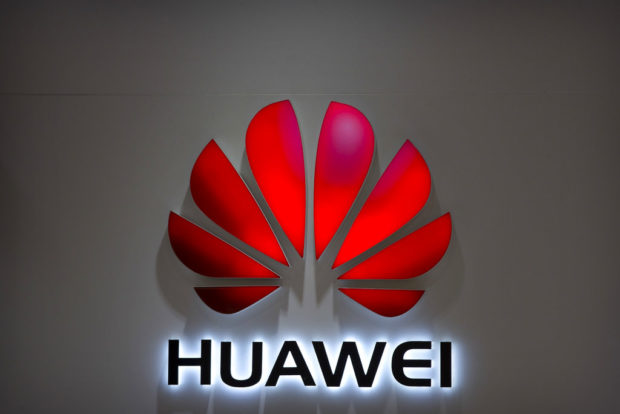US fires arrow into Huawei’s Achilles heel

AP FILE PHOTO
SHANGHAI — The Trump administration’s move to block US technology sales to Huawei shoots an arrow deep into the Chinese tech giant’s Achilles heel — its over-reliance on American components — and threatens the company’s very survival, analysts said.
Citing national security, President Donald Trump last week effectively banned US companies from supplying Huawei and affiliates with the critical components that have helped it grow into the world’s largest supplier of telecom networking equipment and second-biggest smartphone maker.
Trump’s broadside will cause pain for US companies that count on Huawei as a steady customer, but it poses an existential threat to Huawei.
“The worst case would eventually see a total cutoff of access to US technology — (Huawei) would almost certainly not survive this outcome in its current form,” the Eurasia Group consultancy said in a report issued Sunday.
The tech ban caps months of US effort to isolate Huawei, which Washington suspects has deep links to China’s military, allowing Beijing to potentially use Huawei-enabled networks for espionage or cyber-sabotage.
The risks for Huawei came into focus this week when Google, whose Android operating system powers most of the world’s smartphones, said it would cut ties with Huawei as a result of the ban.
That poses a dire threat to Huawei as loss of full access to Google’s services could make its phones a hard sell to consumers.
Major setback
And with the digital ecosystem now a duopoly of Android and Apple’s IoS system, Huawei is in a bind.
“This is a fairly major setback for Huawei’s smartphone division,” said Ryan Whalen, a professor with the Law and Technology Centre at the University of Hong Kong.
Huawei has said it was working on its own operating system, but Whalen notes that the Android-IoS stranglehold is nearly impossible to break.
“Just look to players like Nokia, Blackberry, and Microsoft that have all failed recently in similar endeavors,” he said.
Huawei’s other major business segment comprises carrier networks around the world powered by its equipment and which give it a leg up in the race to dominate fifth-generation (5G) technologies.
5G is the next digital milestone: its ultra-fast network speeds and data capacity making possible widespread use of artificial intelligence and other high-tech advancements that China’s government wants its companies to lead.
But here as well, Huawei is vulnerable.
It buys about $67 billion worth of components annually, including about $11 billion from US suppliers, according to a tally by The Nikkei business daily.
Eurasia Group said it had learned that major US suppliers including chipset manufacturers Qualcomm, Qorvo, and Texas Instruments, and software firms Oracle and Microsoft, have suspended shipments to Huawei until the dust settles.
This could “completely undermine” Huawei on 5G, it added.
Chinese President Xi Jinping has previously sketched out plans for China to gain dominance in key future high technologies by 2025, a strategy that has caused US alarm.
But harsh action against Huawei could give the push even more impetus, said Roger Kay, founder and analyst at Endpoint Technologies Associates.
“The longer-term effect is that Huawei and other Chinese companies turn away more sharply from American suppliers,” he said.
Huawei shrugs it off
Founder Ren Zhengfei shrugged off supply fears, telling Chinese media on Tuesday that Huawei has a hoard of chips and can manufacture its own.
But tech analysts view that as mere bravado.
Eurasia Group said that regardless of any chip stockpile, Huawei “cannot stockpile software, and there is no conceivable way the firm could survive for an extended period… without access to global supply chains”.
Huawei’s own chip design arm Hisilicon is also targeted by the US ban, cutting it off from critical tools it needs to continue function.
Trump could be merely using Huawei for leverage in broader trade talks: US officials have issued a 90-day reprieve on the ban.
But Beijing could hit back.
Huawei’s smartphone rival Apple could be particularly vulnerable to Chinese counter-measures as nearly 20 percent of its sales are in China and it relies heavily on Chinese factories for production.
Some sort of compromise remains possible, perhaps with the US approving case-by-case tech sales to placate American suppliers, thereby limiting the damage to Huawei.
But Trump has fuelled growing bipartisan congressional animosity against Huawei that could prevent him backing down, analysts note.
One wildcard is Europe where Huawei has significant business with carriers, for whom a supplier shift would be costly.
The US feels that a Huawei presence in Europe must be prevented for cyber-security reasons, and the main intent of the tech ban is to force Europe and other key markets to abandon Huawei on 5G, Eurasia Group said.
Germany, France and the Netherlands have resisted US pressure, but analysts say they cannot do so for long.
Further US pressure would make it “very difficult for the EU to continue working with Huawei,” said Guntram Wolff, director of Brussels-based think-tank Bruegel.